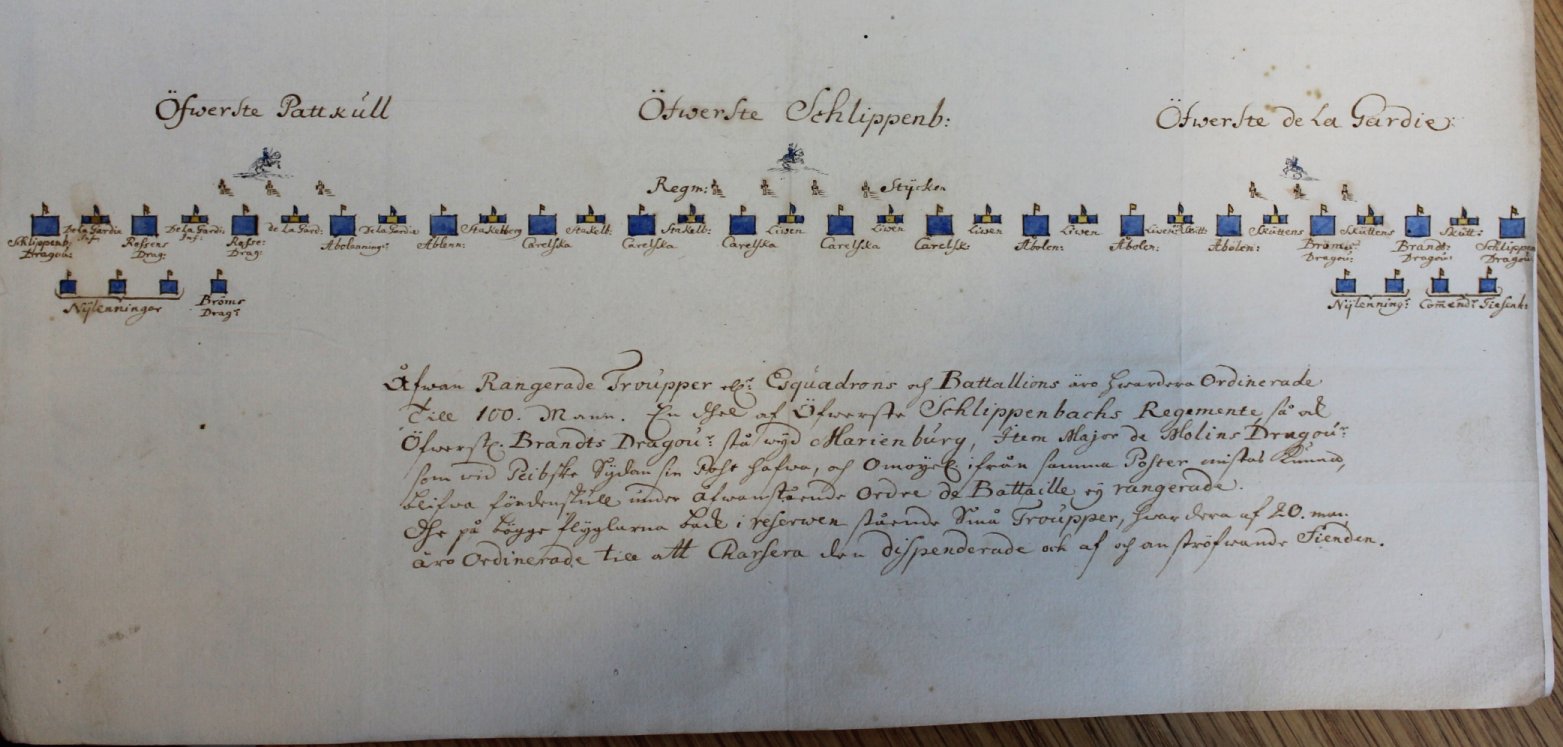Topic: Archives
It has been noted by several historians that there seems to have existed a close personal friendship between the Chancery official Casten Feif and Georg Lybecker, commander of the Finnish army 1707-1710 and 1712-1713. However, few letters between them seem to have been preserved. When I some months ago had the opportunity to go through a private archive I came upon item, which likely thus far has escaped the notice of historians. It was written by Lybecker on 8 January 1713 in reply to a couple of letters from Feif, dated 25 July and 21 August 1712.
Lybecker deals with a number of issues in his letter, for example:
1. His proposal to use some of the cavalry as infantry (apparently not approved by the King). Lybecker explains his reasoning: during the winter the deep snow makes movement of cavalry difficult and it's also hard to find fodder.
2. The organization of the tar trade (Tar Company) and the possible establishment of a commercial center at Veckelax (Vehkalahti).
3. The establishment of glassworks in Finland. Lybecker states that he knows very little about the other counties, but it should be possible near Vyborg.
4. The possibility of using the Finnish forests for making potash.
5. The establishment of manufactories in Finland.
6. The leasing of tolls and customs.
7. The new method of taxation (property tax of 1713). Lybecker states that the idea (taxation according to ability) is certainly fair, but he is not convinced that everyone will give correct figures for their wealth.
8. The chances of recapturing Vyborg and other fortresses (Lybecker says that there is no lack of ambition or heart - only of means).
9. The possibility of finding new recruits and the general situation in Finland.
10. How the clergy has destroyed the country (according to Lybecker an issue too large to cover in a letter).



